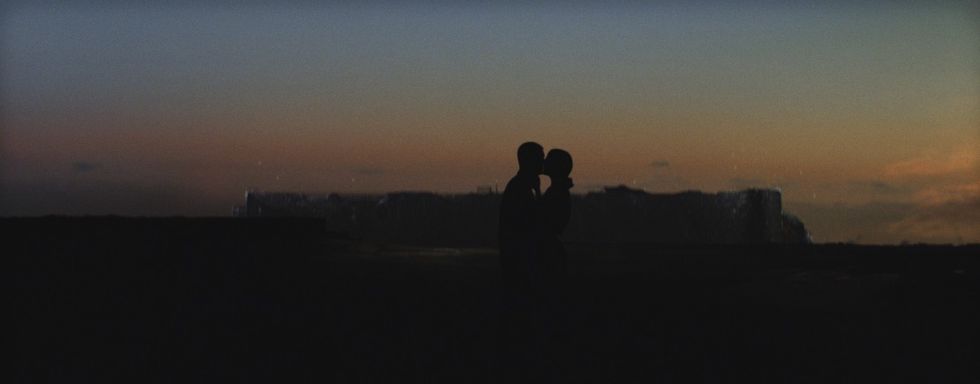This Filmmaker Made a Fantasy Epic With No Major Studio Support
Over 6 years in production,The Wanting Mare exemplifies true fantasy immersion with a DIY ethos.
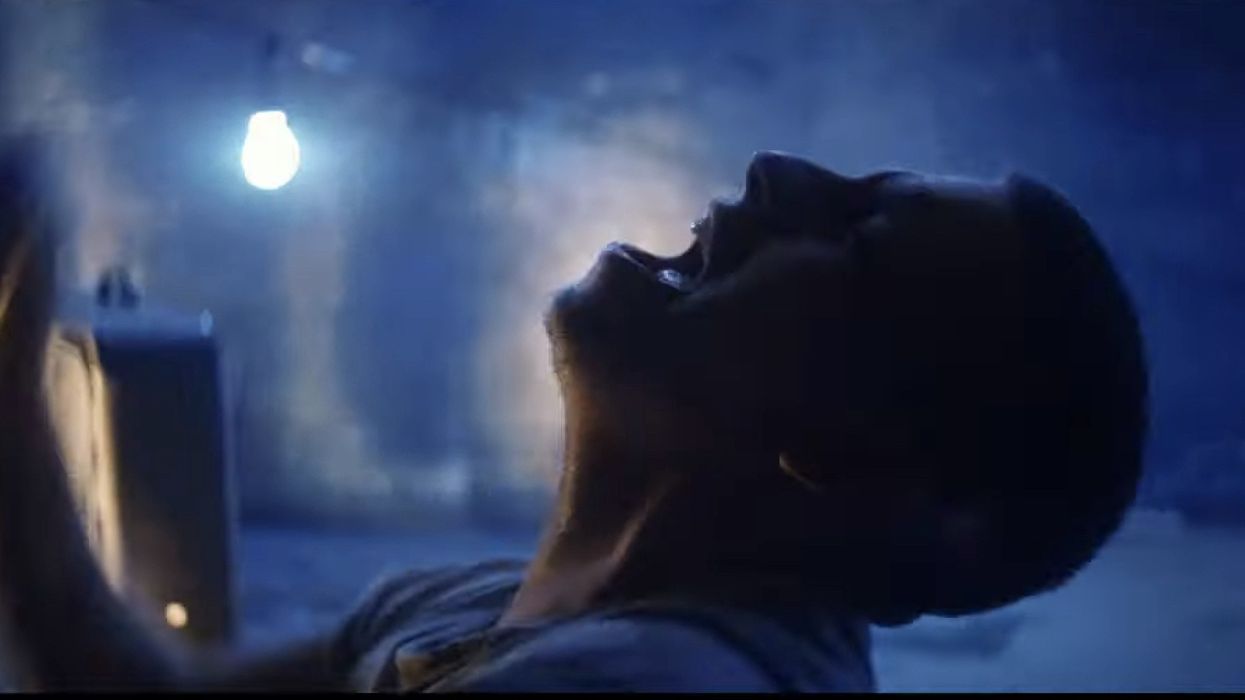
The age old question: if you knew what you know now, would you still go through with your project?
For director Nicholas Ashe Bateman, it was never a choice. He's been drawn to tell stories in a fantasy universe he's held in his head since he was a teenager: the mysterious and expansive world of Anmaere. With a background as an actor, Bateman knew very little about VFX — he didn't know if any of it was possible, but he just starting working. Six years and four computers later, armed with a copy of the Lord of the Rings DVD and a dedicated crew, Bateman's first entry into his fantasy universe is now undeniably real.
By the look of The Wanting Mare, you might have trouble believing that most of it was shot in a small warehouse space in New Jersey. This caught the attention of Executive Producer Shane Carruth (Primer, Upstream Color), and the completed film has just premiere this weekend at Chattanooga's virtual film festival. Watch the teaser and read on for a deep-dive into the process of bringing it all to life.
(As a special offering for No Film School readers, the first 5 comments that ask for a badge will be awarded a badge to attend Chattanooga's digital film festival.)
"I cherish limitations. I love them. That's how I start."
NFS: I've been following this project for many years, how long has it been? How did it all start?
Nicholas: I had started writing about this fictional world — I like Tolkien's phrase "secondary world" — since I was a teenager, but it didn't really turn into a single film idea for quite a while. I dropped out of college to make a film with my friends called Circus Animals, and after that I wanted to make something that was as far away from the previous thing as possible. At a certain point I decided that I was interested in the constriction of working in one sandbox. I chose that I would never leave this world, and commit to it and grow with it.
The whole rest of the world [of Anmaere] was made in the process of me writing The Wanting Mare. It has a very purgatorial feeling. In a way that's the crux of what's happening in the movie. These people are thinking about fantasy and narrative, and what is the importance of magic or myth. That's what I was thinking about when I was making it. If someone had given me the budget to make the movie I wanted to make in 2012, it would've been a disaster. Me shooting that much and having an incredible small team of people who were up for that process allowed us to see works and what doesn't work. I envy people who make something in a sudden thrust, there's something incredible about making something with the lack of self-examination.
What's really challenging for me working on something on an idea level for close to 8 years, it's really hard to not look at yourself. The decision-making process includes a conversation with myself: sometimes I'm going to side with 2015 version of Nick, sometimes the 2017 Nick isn't the right guy for this, etc... So much of the process of making the movie has changed the movie. I really just tried to make the movie I wanted to make when I was 22. When I serviced that, it worked really well.
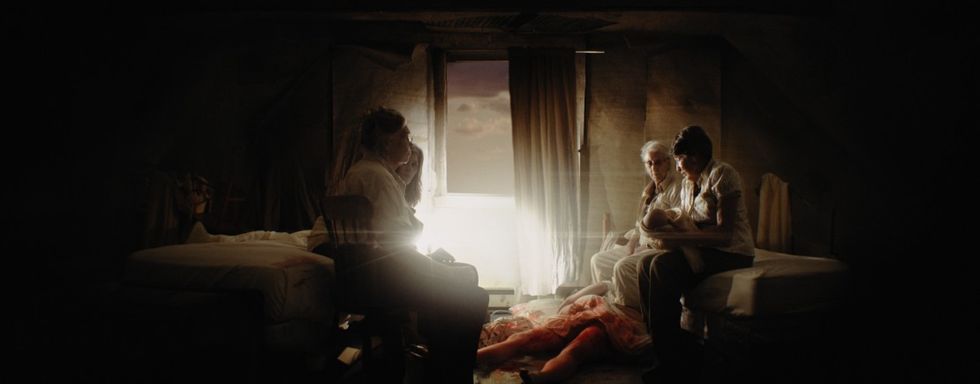
NFS: How long did you shoot for?
Bateman: I didn't know that we would ever finish the movie because we started filming with less than a quarter of the budget we needed to make the movie. And we shot a third of the movie. We started filming in 2016 with a small amount of money we raised on IndieGoGo. It was a crew of 7 people. We got in a van, started in Baltimore, went to New Jersey, and put up a blue screen in a parking lot. Then we filmed for 2 weeks in Nova Scotia. We picked an Airbnb that seemed to fit set-design wise into the world, and we filmed for 2 weeks. Everyone was piled into one van and one U-haul. That was the major chunk of the movie, then we used that to raise the next chunk of money to film the next Summer with a bit more people. We never had more than 20 people on set. The difference between those two stages was huge. It went from me on a green-screen in a kitchen, to shooting way more material, build partial sets. I thought we could pull off the VFX stuff as long as whatever the actors were standing on was real. But there are scenes where I'm walking and I literally have to crouch so my head stays on the green screen.
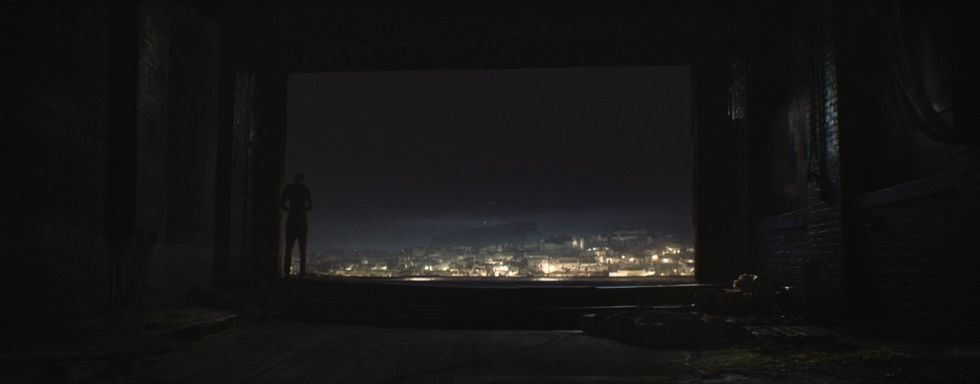
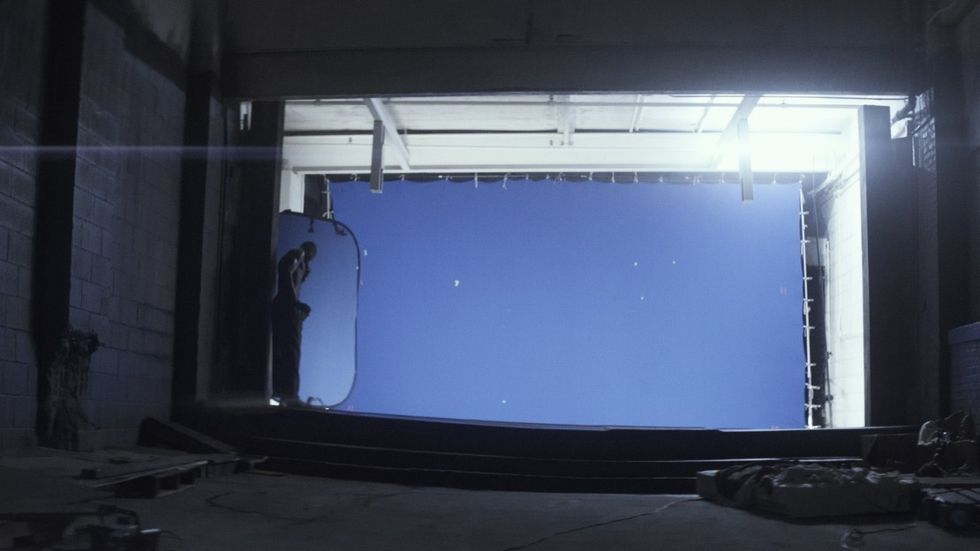
We rented one warehouse in New Jersey, a huge empty warehouse in a dilapidated building surrounded by tire manufacturers. Audio was unusable except between 6pm-7am. We were finally able to rent bigger blue screens, but any of the actors who came for that second round of filming thought we were totally insane. A lot of these scenes are supposed to be on cliffs, moors, extreme physical places, but it's all in this warehouse. So it sorta became a black box theater thing. We could only rent a single fan. Sometimes someone is just casually Hollywooding a fan walking next to the actors. We must've seemed insane, but I think since we were so calm about it we sold the idea to them that it would work. We could do more takes and it was quiet at 4am. The last 30 minutes of the movie is just entirely in that room, we just moved pieces around.
"You really just have to figure out what is off-limits in terms of technical capability, then you can figure it out."
NFS: What is your background in VFX?
Nicholas: I am of the generation of DVD special features, I am probably making movies because of DVD special features. The best of those are the appendices to the Lord of the Rings. Those movies have the spirit of a strange independent movie. They started with, I think, 3 computers and then somehow convinced a studio to do it. I always imagined the technology that those movies were just about what I was capable of today. So I thought if you removed any use of 3D elements and just reduced it to 2D matte paintings using digital tracking, then everything becomes very possible. I became really interested in digital matte painting when I was younger. All of my interest in VFX comes out of that. It's really a way to learn compositing. You're looking at levels of light, fog, exposure, etc.
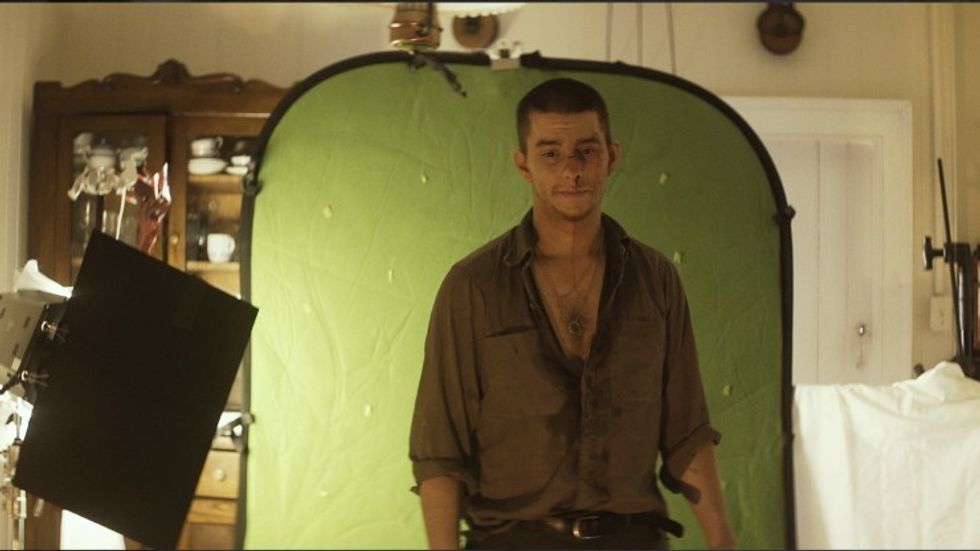
Years ago I moved to California to work with Coatwolf Productions on Chuck Hank and the San Diego Twins. I didn't have much else to do and they said come help out. I felt like I was running away with the circus, and I was, and it was wonderful. In that film there was a massive amount of visual effects that weren't really accounted for. This long process of constantly reworking the film is really only possible when there's a VFX component. It was this ecstatic process of how make this big, fun silly movie together. So I lived in a garage in Ventura for 3 years with a hard drive and tried to create some effects that were somewhat passable. That gave me enough of a foundation.
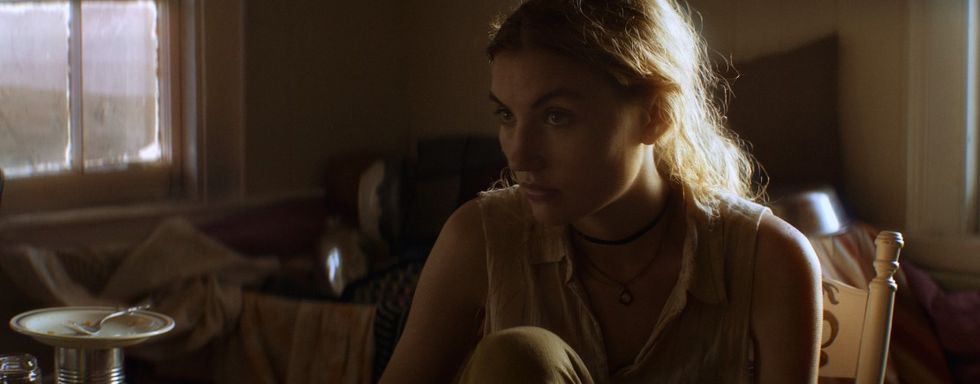
You really just have to figure out what is off-limits in terms of technical capability, then you can figure it out. For me since I was just at the beginning of learning how to do 3D models, the inclusion of 3D elements were off-limits. I thought as long as I'm dealing with matte paintings with 2D elements I'd be okay. Sometimes the ground the actors are walking on is flat, just 2D with a background projected out. If I had to render in 3D it would've meant rendering every frame, and that would've been impossible on a cost level. Especially before Blender and all this video game real-time rendering stuff.
I love painted backdrops. I love Victor Fleming's romantic backdrops. The biggest challenge was just figuring out a through-line. I'm not interested in everything looking real, it just needed to look cohesive. That became the battle.
"The way we made this movie is not a specific case. A lot of people can do this. It's only going to get exponentially easier."
NFS: What did your core crew look like and how did you navigate so many effects shots?
Nicholas: All the people who made the VFX were also the people who shot it. Everything was David Ross (DP and producer), Zach Schaefer (gaffer and producer) and I figuring out how we wanted everything to look like, and then picking flares, and cheating the eye. Without the two of them it would've been impossible. The reason to go to Nova Scotia in the first place was because we didn't have the ability to complete 30 minutes of VFX shots. We also had massive restrictions of what was possible. I knew if I had a bunch of actors in medium shots and the background was out of focus, then we could get away with a pretty bad matte painting. But at a certain point you have to see what's going on. So that was a perfect time to get footage that feels as natural as possible. Footage that people look at and know that it's real. When that's intercut with someone in the same setting but digitally recreated, what was real before remains real. It adjusts.
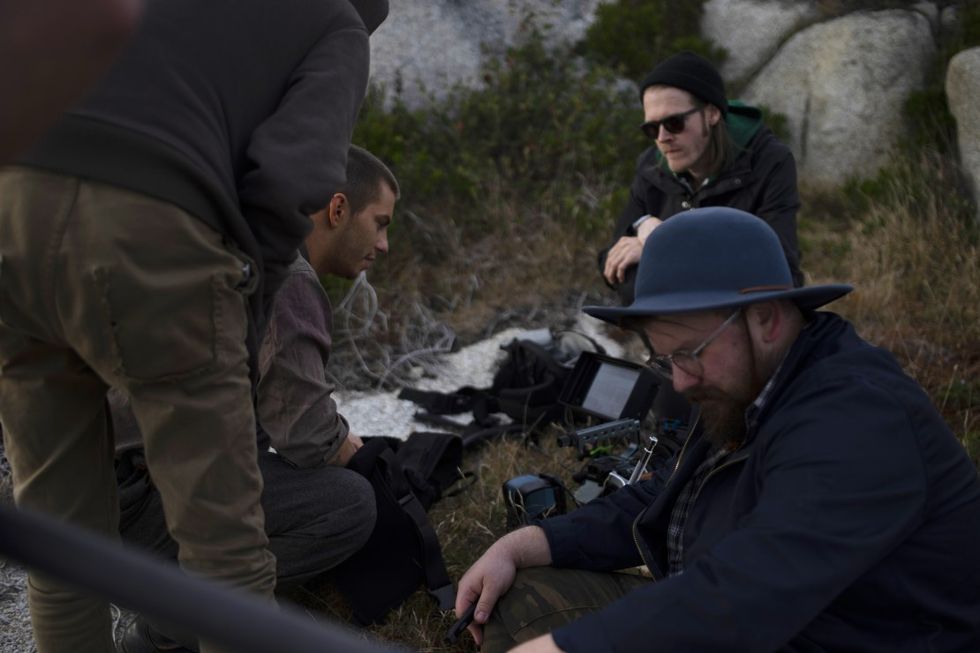
NFS: How has your process of creating effects changed since you started?
Nicholas: I didn't have anywhere near the VFX skillset to finish the movie when I started it. You read so much about people applauding practical effects. I love all those things, but anything that is made should be made in the same spirit. So once we got over the idea that "the only way to make a true film is to make everything practical," we were able to commit to the blue screens and our production designer Cassandra Baker was able tobuilding half of these sets. The more real things we had in the scene the better the visual effects got. Once we were proud of the fact that it was a largely digital production, everyone got to do way more.
"My main interest, the thing that moves me, is a sense of place."
Zach and I composited all 600 VFX shots in the movie. We burned through 4 computers just rendering. Even up to last week, there were scenes done in the movie that are done on software that I don't use anymore -- that nobody uses anymore. I worry about updating the techniques and upending the balanced recipe of the movie. But everything is changing. I've spent the past year and a half being obsessed with Blender. Now you have photo-scan 3D objects that you could put into a scene with global lighting that instantly looks real. All of this stuff is very exciting because the way we made this movie is not a specific case. A lot of people can do this. It's only going to get exponentially easier. For example the Unreal 5 engine we will be able to import a photo-scan piece of wood and be as complicated geometry as possible.
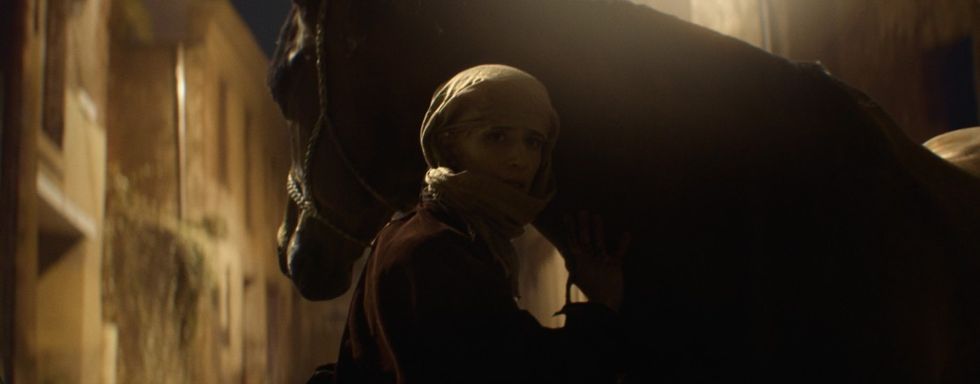
People ask me if I ever want to do VFX again. I haven't decided yet if it's going to be a permanent part of my process or not. But it's getting easier and more exciting every day. I also do a lot of VFX for other people, and that didn't really happen until 2 years ago. Every time that's happened I've been able to do something new. Right now I'm working on The Green Knight which is the most exciting thing in the world to me.
NFS: It's incredible to see what you did with such huge limitations.
Nicholas: I cherish limitations. I love them. That's how I start. I've been thinking about world-building and VFX. I've been thinking a lot about map making. All fantasy begins with someone making a map. Then you have characters going left, right, wherever, then you have the terrain. I think that's how my brain likes working. I think that's how everyone's creative process goes, to a degree. I want to do X, what are things we can and can't do?
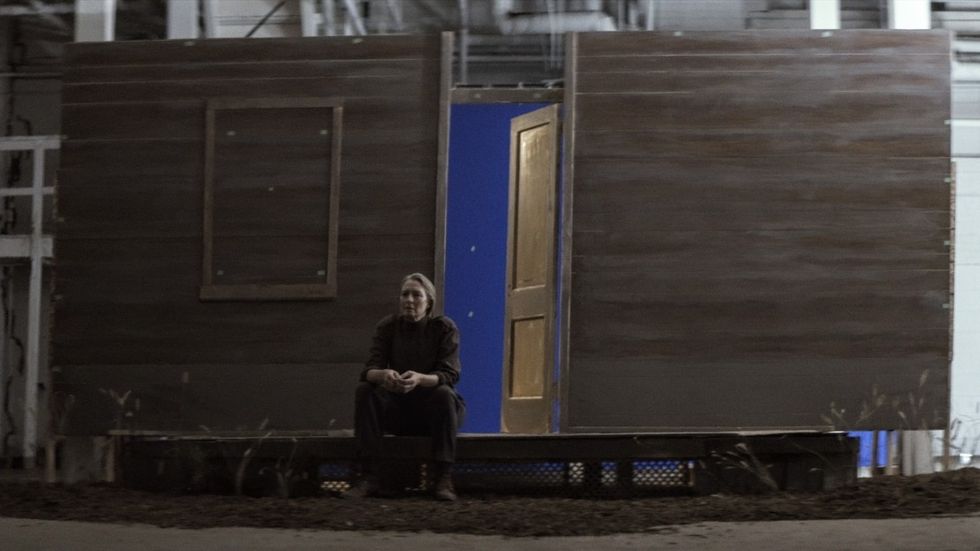
If someone shot a scene in a real alley and wanted to make someone walk through the wall, it would be a challenge. I think the thing that scares people about VFX is that there's no walls there. So I say just choose where the walls are, and then light it accordingly, frame it accordingly. If you decide later you need a hole in the wall, then you go and change all the scenes where the hole is in the wall, and start playing this game where you're connecting these elements. My main interest, the thing that moves me, is a sense of place. The movie is about a place called Whithren, which has been in my head for a long. So I think about it as if it was a real place.
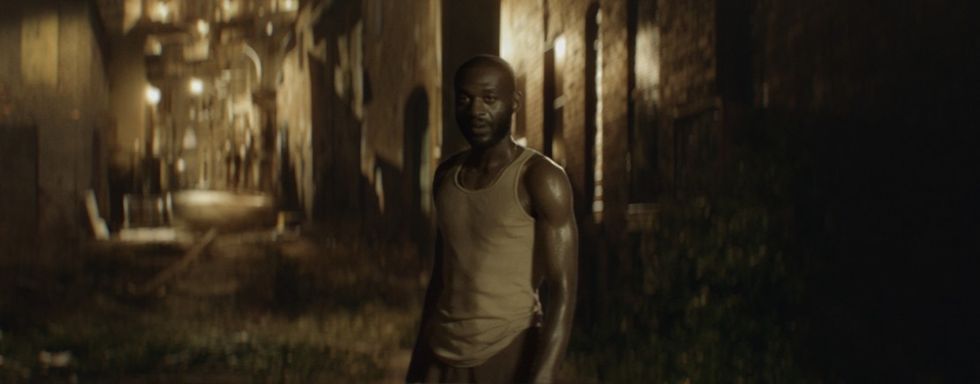
NFS: How did Shane Carruth get involved?
Nicholas: I met him once through Evan Glodell. For me, like a lot of people, he was my absolute hero. He's the guy who really did it. I was that weird guy who was like "Hey, in an interview 10 years ago you said that you were interested in VFX. Well, I've spent 10 years trying to do that." I think for him it was a moment of understanding that he was having an effect on other people, and he jumped on. I remember living in my car sending articles about guys like Shane and Evan to my parents and saying "Look, someone else did it." I told him that we don't want to make a VFX movie, we just want to make this movie and we think we can do it. Since then he's just been a great cheerleader.
"I really just tried to make the movie I wanted to make when I was 22. When I serviced that, it worked really well."
NFS: How do you see your film in context with the way VFX are moving?
Nicholas: At the end of the Lord of the Rings behind the scenes, Peter Jackson said the reason they filmed all of this was that he knew stuff was changing, and at some point someone is gonna make a movie like this in their bedroom. That really punched me in the stomach because I realized that was me, that was the last 20 years of my life. I think that's going to be happening a lot. The technology is arriving. I love it.
I think something different about our approach is, for example: we had written a scene where the description was just that the wind was blowing through the grass. We of course didn't have the money to get the amount of fans to make the grass blow. So how do we get this out of focus grass moving? I keep thinking about digital grass being the most subtle but large change we've seen recently. The fact that we can make grass blow in the wind, versus trying to make an animated robot. The curtains blowing in the teaser, for example, those curtains were put in. The usage of things like that suggest less about VFX versus people just being able to make the movie they want to make.
...
The Wanting Mare premieres this weekend at Chattanooga's digital film festival online. On Monday, May 25th there will be a special live event with director Nicholas Ashe Bateman discussing the making of the film and going in-depth with the VFX process. For tickets visit ChattFilmFest.org. As a special offering for No Film School readers, the first 5 comments that ask for a badge will be awarded a badge to attend the digital festival.

